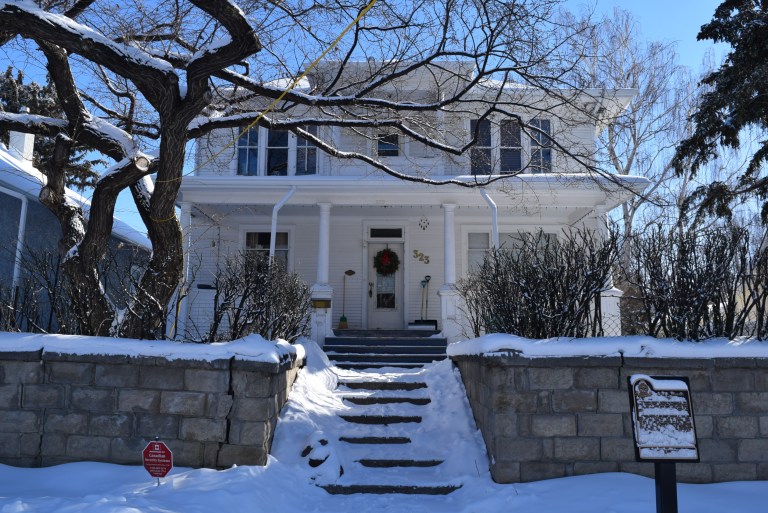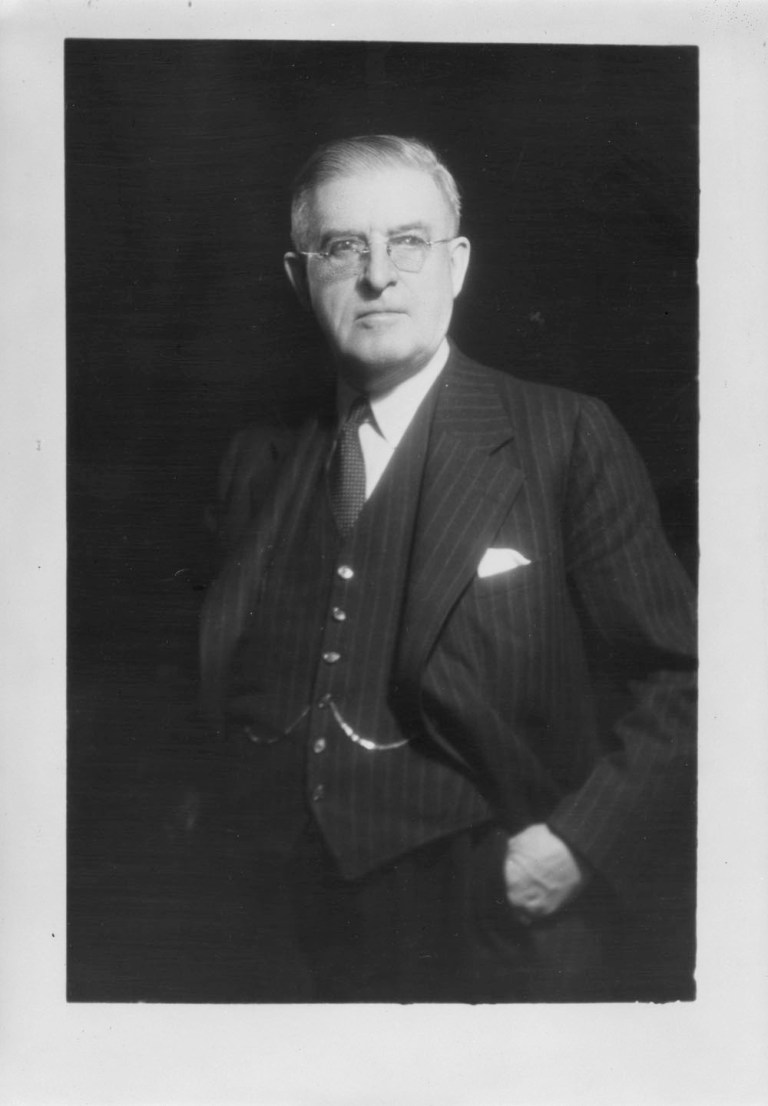Written by: Ron Kelland, MA, MLIS
Over the past few months, some of Alberta’s municipalities have been protecting their built heritage by designating a number of new Municipal Historic Resources (MHRs). These resources are structures and other sites that the municipality has deemed to be of significant heritage value to their community. Like Provincial Historic Resources, municipal designations are listed on the Alberta Register of Historic Places. Municipally designated properties also qualify for conservation grants from the Alberta Historic Resources Foundation.
The City of Lethbridge recently added six new MHRs to the Alberta Register of Historic Places. As of May 31, 2019, the City of Lethbridge has 26 designated MHRs listed.
The most recent listed designations by the City of Lethbridge are:
Watson Residence
Located in the Victoria Park neighbourhood on 14th Street South between 3rd and 4th Avenue, the Watson Residence is an Edwardian Foursquare with classical revival detailing and ornamentation. It was built in 1910/11. It has heritage value as an example of residential construction during Lethbridge’s rapid expansion in the pre-First World War period, and as an excellent example of an urban foursquare home. It was also the residence of Allan James Watson, who was a long-serving superintendent of the Lethbridge School District.

Bentley Block
Located on 5th Street South in Lethbridge, the Bentley Block is a three storey commercial building built in 1905 (with a single storey added in 1911). It has heritage value for its association with the city’s commercial development and with its first owner and developer, Harry Bentley. It was Lethbridge’s first three-storey commercial building and the location of the city’s first department store, containing a grocery department on the first floor, clothing and footwear on the second floor and dry goods on the third floor. The store closed in 1915 and the building became a hardware store three years later. Harry Bentley was a merchant in Lethbridge since 1885 and was elected to the city’s first town council in 891 and served as mayor five times between 1892 and 1899.


Buchanan Residence
Located in Lethbridge’s Victoria Park neighbourhood and built in 1908, the Buchanan Residence is a foursquare style home with Arts and Crafts details. It has heritage value as an example of residential construction during Lethbridge’s rapid expansion in the pre-First World War period, as an excellent example of an urban foursquare home and for its Arts and Crafts ornamentation. It was also the residence of William Ashbury Buchanan, who was a noted editor, publisher and politician. Buchanan was a newspaper editor in Peterborough, Ontario before moving to Lethbridge and purchasing the Lethbridge Herald. In 1907, Buchanan served as the first Provincial Librarian and was later elected to the Legislative Assembly of Alberta for the Lethbridge City district (1909-1911). He was a Member of Parliament for Medicine Hat (1911-1917) and Lethbridge (1917-1921), and in 1925 he was appointed to the Senate, where he served until his death in 1954.


Collier’s $7,500 House
The Collier’s $7,500 House is a five-level spilt house on a large corner lot in Lethbridge’s London Road neighbourhood. It is described as a modernistic take on a Cape Cod home. It has heritage value for is innovative design and as a symbol for the modern ideals of domestic architecture in the 1940s. The house was built in 1942 based on plans purchased from Collier’s Weekly magazine. It was described by the magazine as an affordable and comfortable home for people whom cold no longer afford traditional homes being built up to that time. The house has also been associated with many prominent residents of Lethbridge, including businessman Robert Niven and his wife, noted horticulturalist Edith; artist and photographer Wilfred Roy Beny; and writer Jeff Spalding, who was also a director and curator of the Lethbridge art Gallery.

Southminster United Church
The Southminster United Church is a monumental brick church building located at 1011 – 4th Avenue South in Lethbridge. It has heritage value for its association with the United Church of Canada and the rapid development of religious institutions in Lethbridge during the pre-First World War period. The church was built over 1913-1914, and was the city’s third Wesley Methodist Church built to accommodate the rapidly growing Methodist congregation in Lethbridge. In 1925, the Methodist, Congregationalist and Presbyterian churches united to form the United Church of Canada. However, the first joint services were not held at the Southminster United Church until 1935. Numerous additions were made to the building to accommodate further increases in its congregation, including a hall to the north in 1950 and the Buchanan Chapel in 1961.


Kresge Building
The Kresge Building, also known as the Balmoral Block, is a two-storey, brick commercial building located in downtown Lethbridge at 319 – 5th Street South. Its heritage value lies in its association with Lethbridge’s commercial development in the 1930s. The Kresge Corporation acquired the land for the building in 1929 and had the building constructed in time for opening in 1930. S.S. Kresge was an American chain of retail stores known for their low prices, making it ideally suited to thrive during the Great Depression. The Lethbridge store was amongst the company’s first to open in Canada. The store operated from this building until 1952 when it moved to a larger building about a block away. S.S. Kresge would become K-Mart in 1962, but Kresge stores continued to operate in many cities well into the 1980s.




Some fantastic historic resources! Congrats to the owners and the City for designating them!